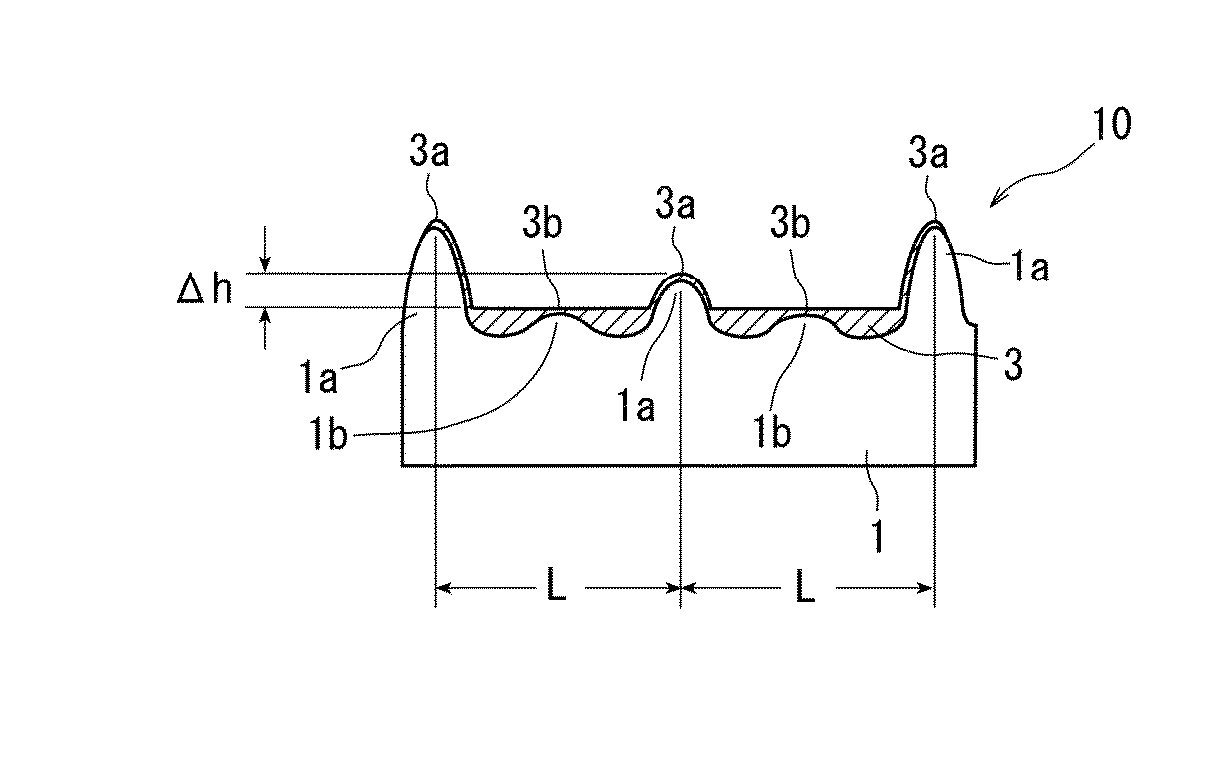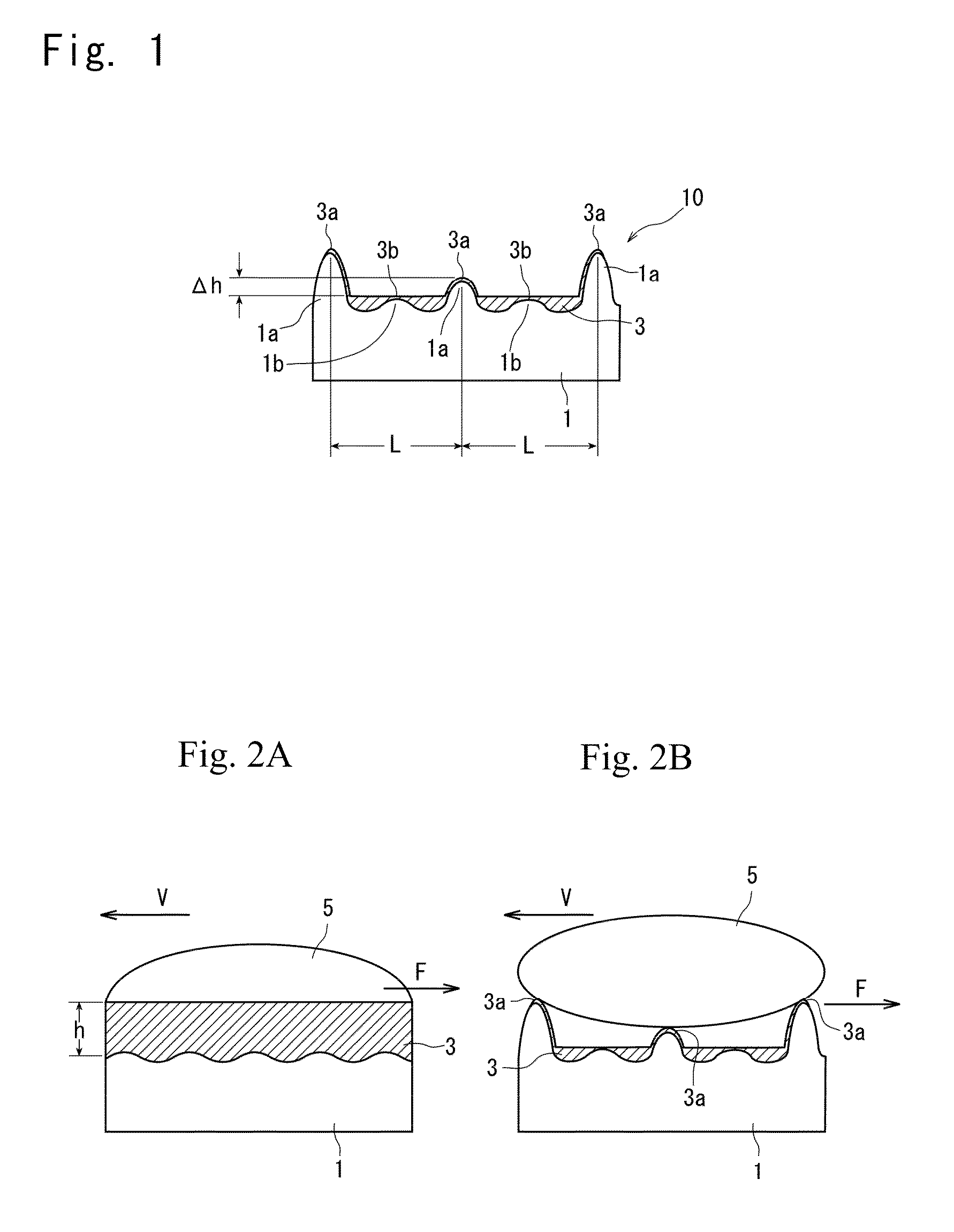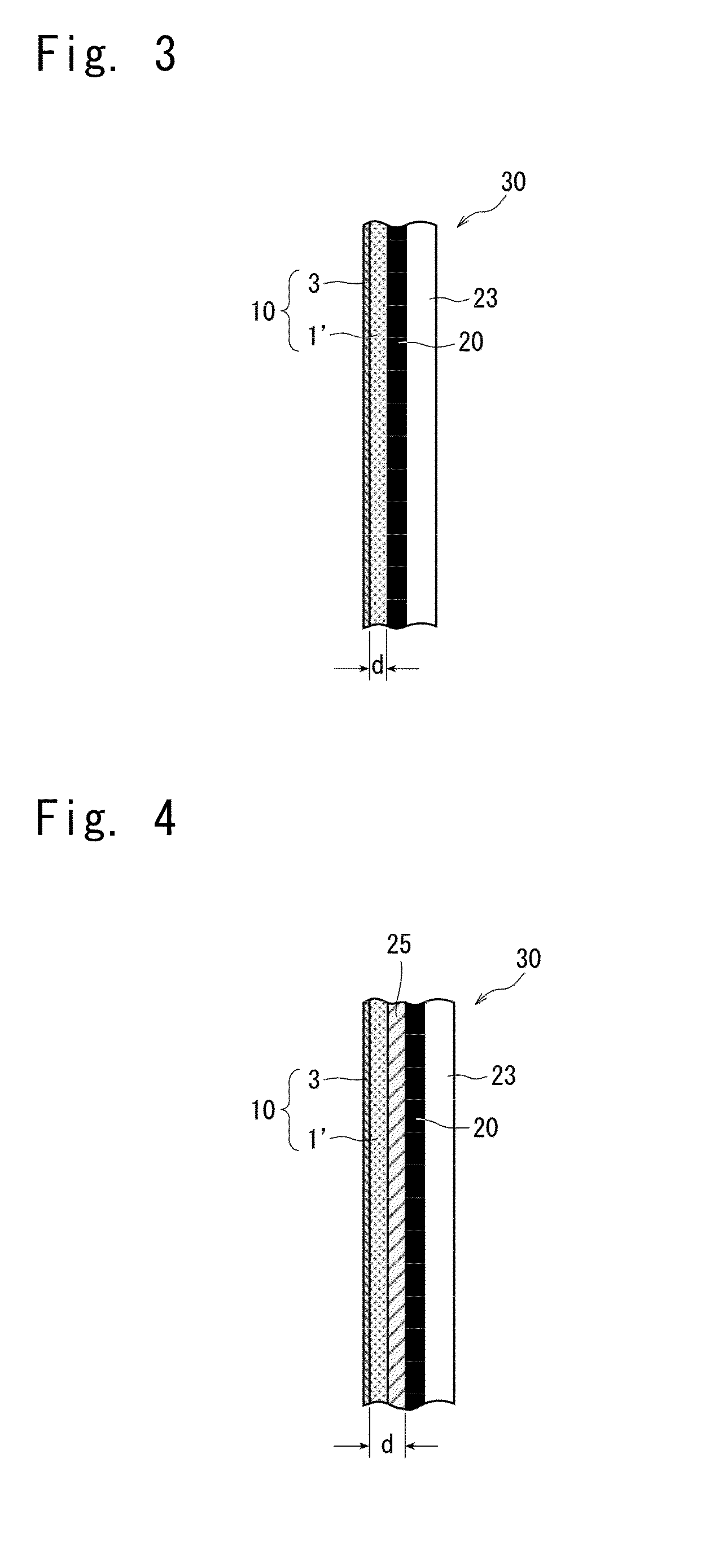Resin structure having a liquid layer on the surface thereof
a liquid layer and surface technology, applied in the field of resin structure, can solve the problems of limit the improvement of sliding property, and not being able to achieve striking improvement, so as to improve the sliding property or non-adhesiveness, and improve the sliding property and non-adhesiveness of oily substances. , the effect of improving the sliding property
- Summary
- Abstract
- Description
- Claims
- Application Information
AI Technical Summary
Benefits of technology
Problems solved by technology
Method used
Image
Examples
example 1
[0168]A resin composition comprising the following components was provided for forming the underlying layer:
Low-density polyethylene (LDPE)95 parts by weight,Additive for roughening the surface 1 part by weight,R972 manufactured by Nihon Aerosil Co.(hydrophobic silica coated with dimethylsilylgroups)Liquid for forming the liquid layer 4 parts by weight,Medium-chain fatty acid triglyceride (MCT).
[0169]Into a 40-mm extruder was fed the above resin composition for forming the underlying layer, into a 30-mm extruder A was fed a resin for forming the adhesive layer (maleic anhydride-modified polyethylene), into a 30-mm extruder B was fed a resin for forming the liquid diffusion prevention layer (ethylene•vinyl alcohol copolymer), and into a 50-mm extruder was fed a resin for forming the base member (low-density polyethylene). A molten parison thereof was extruded through a multilayer die head heated at a temperature of 210° C., and was directly blow-formed at a metal mold temperature of ...
example 2
[0179]A resin composition comprising the following components was provided for forming the underlying layer:
Low-density polyethylene (LDPE)94.7 parts by weight,Additive for roughening the surface 0.3 parts by weight,crosslinked PMMA-ALiquid for forming the liquid layer 5 parts by weight,Medium-chain fatty acid triglyceride (MCT).
[0180]A container of the multilayered structure was prepared in the same manner as in Example 1 but using the above resin composition for forming the underlying layer. The prepared container was measured in the same manner as in Example 1. The results were as collectively shown in Table 1.
[0181]The container possessed the following layer constitution with the liquid layer as the inner surface.[0182]Liquid layer / underlying layer (80) / adhesive layer (10) / liquid diffusion prevention layer (25) / adhesive layer (10) / base member (370),[0183]depth of the diffusion prevention layer (90),[0184]whole thickness (495).
example 3
[0185]A resin composition comprising the following components was provided for forming the underlying layer:
Low-density polyethylene (LDPE)94 parts by weight,Additive for roughening the surface 1 part by weight,crosslinked PMMA-BLiquid for forming the liquid layer 5 parts by weight,Medium-chain fatty acid triglyceride (MCT).
[0186]A container of the multilayered structure was prepared in the same manner as in Example 1 but using the above resin composition for forming the underlying layer. The prepared container was measured in the same manner as in Example 1. The results were as collectively shown in Table 1.
[0187]The container possessed the following layer constitution with the liquid layer as the inner surface.[0188]Liquid layer / underlying layer (80) / adhesive layer (10) / liquid diffusion prevention layer (20) / adhesive layer (10) / base member (300),[0189]depth of the diffusion prevention layer (90),[0190]whole thickness (420).
PUM
| Property | Measurement | Unit |
|---|---|---|
| heights | aaaaa | aaaaa |
| heights | aaaaa | aaaaa |
| particle diameter | aaaaa | aaaaa |
Abstract
Description
Claims
Application Information
 Login to View More
Login to View More - R&D
- Intellectual Property
- Life Sciences
- Materials
- Tech Scout
- Unparalleled Data Quality
- Higher Quality Content
- 60% Fewer Hallucinations
Browse by: Latest US Patents, China's latest patents, Technical Efficacy Thesaurus, Application Domain, Technology Topic, Popular Technical Reports.
© 2025 PatSnap. All rights reserved.Legal|Privacy policy|Modern Slavery Act Transparency Statement|Sitemap|About US| Contact US: help@patsnap.com



